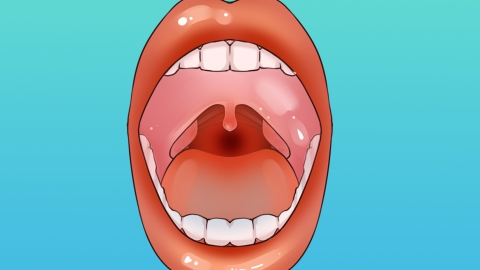What causes persistent white phlegm in the throat, and what should I do about it?
Generally speaking, the throat refers to the pharynx. White sticky phlegm that cannot be completely expelled from the throat may be caused by poor environmental conditions, improper diet, chronic bronchitis, bronchiectasis, pneumonia, or other reasons. Treatment can be carried out under the guidance of a doctor using general treatments, medication, and other methods. A detailed explanation is as follows:

1. Poor Environmental Conditions
When staying in an environment with polluted air, high dust levels, or irritating odors, the respiratory tract secretes more mucus to protect itself by trapping these harmful substances. Mixed with respiratory secretions, this mucus becomes white sticky phlegm. Because the environmental irritation persists, it may feel as though there is endless phlegm to expel. It is advisable to avoid prolonged exposure to polluted environments, such as limiting outdoor activities and wearing anti-smog masks on hazy days.
2. Improper Diet
Consuming excessive cold, greasy, or sweet foods, such as drinking large amounts of cold beverages or eating fried foods and desserts, can affect the spleen and stomach's digestive function. When the digestive function of the spleen and stomach is impaired, water and moisture metabolism becomes disrupted, leading to the formation of phlegm. This phlegm may rise to the throat, causing an increase in white sticky phlegm that is difficult to completely expel. It is important to maintain a balanced diet and reduce the intake of cold, greasy, and sweet foods.
3. Chronic Bronchitis
Chronic bronchitis may be triggered by long-term and repeated effects of factors such as smoking, air pollution, or viral and bacterial infections. Long-term inflammation in the bronchi causes the goblet cells and mucous glands of the bronchial mucosa to proliferate and enlarge, secreting large amounts of mucus. As the phlegm moves upward through the throat, it results in a continuous production of white sticky phlegm. Symptoms such as wheezing and shortness of breath may also occur. Under a doctor's guidance, medications such as ambroxol hydrochloride oral solution, compound licorice oral solution, and others may be used for treatment.
4. Bronchiectasis
Bronchiectasis is primarily caused by interactions between bronchopulmonary infections and bronchial obstruction, which may lead to bronchial deformation and dilation, causing poor drainage and making it prone to recurring infections. Inflammatory irritation stimulates the bronchial mucosa, prompting the mucous glands to secrete large amounts of mucus, resulting in persistent production of large quantities of white sticky phlegm. Due to the irreversible pathological changes in the bronchi, the phlegm continues to persist. Symptoms such as hemoptysis and fever may also accompany the condition. Patients may follow medical advice to use medications such as acetylcysteine effervescent tablets, azithromycin capsules, levofloxacin tablets, and others for treatment.
5. Pneumonia
Pneumonia is mainly caused by infection with Mycoplasma pneumoniae. Under inflammatory stimulation, alveoli and bronchial mucosa may be damaged, increasing respiratory secretions and producing white sticky phlegm. Additionally, mycoplasma infection can impair the movement of respiratory cilia, causing difficulty in expelling phlegm and leading to accumulation of white sticky phlegm in the throat. Symptoms such as headache and chest pain may also occur. Patients may follow medical recommendations to use medications such as penicillin V potassium tablets, doxycycline hydrochloride tablets, fluconazole sodium chloride injection, and others for treatment.
In daily life, attention should be paid to oral hygiene, including brushing teeth in the morning and evening and rinsing the mouth after meals to prevent bacterial growth. Additionally, maintaining indoor air humidity using humidifiers can help avoid dry air irritating the respiratory mucosa and triggering increased phlegm secretion.








